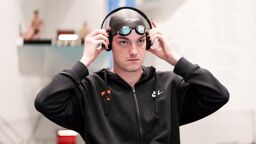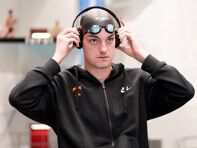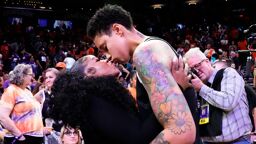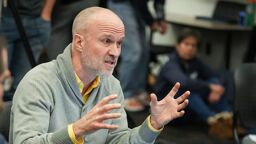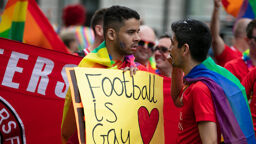(This story was published in 2001).
In 1985, Ed Gallagher, a former tackle with the University of Pittsburgh football team, drove to Kensico Dam in Valhalla, N.Y. Distraught, he laid down on his back atop the dam and rolled off the edge. Better to die of suicide than to die a “fag with AIDS.”
He was 27 years old at the time. Growing up in the 70’s, he had been a 6’3″ giant but felt lonely, frustrated, and confused about his sexuality. He didn’t know who he was, and felt like he didn’t fit in. That’s when he turned to football, hoping to finally find a place where he’s thrive and have a label for himself: “football player”.
Football allowed him to excel in something, and be a part of a team. It also gave him that label he found so comfortable to wear. He played through high school and through four years at Pitt. He even tried out for the New York Jets but didn’t make the cut.
All through these years, despite having found a place for himself, he still wrestled with his sexuality.
“Up until age 14 it was only girls I ever thought about,” Gallagher says. “And then I started getting crushes on some friends and having fantasies with guys I was playing football against.”
Gallagher kept his attraction to men on the back burner and, as Gallagher says, “if you keep something on the back burner, eventually it’ll boil over.”
One night a couple of months before his destiny with the dam, he took the train into Greenwich Village and went into a gay bar. This wasn’t the first time he’d been inside one. He had, on a number of occasions, gone inside “just to take a piss” while in the Village. This was, however, the first time he had gone with the intention of staying.
Tanked up on wine he had been drinking, he made quick friends with another guy in the bar that night. Before he knew it, the sun was rising the next morning and he was sleeping in the bed of another man. His immediate reaction: “Oh my God, what have I done?”
He quickly left the apartment and, while walking back to the train station, saw a copy of the Village Voice. It was 1985, and AIDS was just coming into the conscience of the nation. Splashed on the cover of the newspaper was an article about the spread of AIDS in the gay community and the inaccuracies of the newly developed test.
“I was so scared of dying of AIDS and hurting others, I thought maybe I should just kill myself,” Gallagher says. “I didn’t want to be gay, I didn’t want my father knowing, I didn’t want anyone knowing.”
After the incident, he continued having sex with women and tried to bury the fact that he had, after years of fantasizing about it, actually slept with another man. But the memory of that night, and the thought that his father might discover the truth were more than he wanted to live with.
“Suicide is selfish,” Gallagher says, “but I didn’t see any other way to save myself and protect others. I didn’t want to go out as the faggot who died of AIDS.”
Of course, Gallagher didn’t have HIV or AIDS or any other sexually transmitted disease. He simply assumed he did because he had had sex with a gay man–an assumption all too familiar in America in those early days of AIDS.
A couple months after that night in Greenwich, he made the trip to Kensico Dam.
But a funny thing happened that day–he became the first person to survive a suicide attempt at the Dam. A student had gone to the dam that day with the same intention; Gallagher beat him to the punch. And, when Gallagher was lying on the ground after his fall, it was the student making the 911 call that saved Gallagher’s life.
The next five months he spent continuing to try to kill himself. In the Westchester County Medical Center, he punched every nurse and doctor who came within his reach. He had a tracheotomy tube to help him breathe. He had metal plates drilled into his head to keep his neck straight. Below his chest, his body felt like pins and needles.
“I just wanted to be dead,” he says.
For hours, days, weeks, this went on. Gallagher lay there in bed, staring at the ceiling, swinging at anything that moved, virtually unable to move himself. Then came more bad news: he had developed bed heel, a condition affecting the bone in his heel, and one of his legs was going to have to be amputated.
“My tune changed from ‘screw God’ to ‘help, God’,” Gallagher says. The doctors were able to save the leg with a procedure that removed part of his heel, and Ed started to take on a different perspective on his new life.
“I started thinking, if I didn’t die from rolling off this dam, maybe there is a bigger reason for me to be here.”
That reason has come in the form of helping as many people as he can. Now 44 and an openly gay man paralyzed from the chest down, Gallagher is connecting with people around the country to try to prevent anyone from duplicating the suicide attempt that nearly ended his life.
“That atrocity at the dam redefined my will to live with a sense of purpose.”
He regularly makes speaking appearances at high schools, hospitals, health centers, and Fortune 500 companies like Pepsi and AT&T. He has a local New York cable talk show called “Mister Ed’s Corral” that, in part, addresses the issues of disability and homosexuality. He founded Alive To Thrive, an organization “pr omoting suicide prevention, emotional and sexual health, creativity and potential, and the free expression and rights of all individuals. “
omoting suicide prevention, emotional and sexual health, creativity and potential, and the free expression and rights of all individuals. “
Gallagher has also written books including “Will I Live Another Day Before I Die?” and “Thoughts on Suicide and Life.” His most recent is Johnny In the Spot (left), which Gallagher calls “kind of autobiographical.” It’s a day in the life of Johnny Spokain, a gay spinal cord injured man, who reflects on his childhood and events leading up to his paralyzing injury in 1973.
“It’s a good security blanket for a kid coming of age and questioning his sexuality,” says Gallagher. While the book is in part about sexuality, Gallagher is quick to reassure that the book is also a great inside view of paralysis, whether someone is gay, straight, or in between.
Be it the writing, speaking, or simply getting up every day as a paralyzed man, Gallagher says that sports prepared him well for all of this.
“It’s like running. The first day you go out for track, it hurts like hell. But, eventually, it becomes second nature.”
His personal life, of course, has changed, too. Before he was paralyzed, he was a closeted gay man having sex with women. Now he’s openly gay. And, contrary to the perceptions of many, he still dates and has a sex life. Though paralyzed from the chest down, he asserts that “every bit of sex doesn’t come from what your dick can and can’t do.”
While Gallagher is now physically paralyzed, he has never been more emotionally free. He looks back at the kid he was then, and the stupid thing he did, and realizes that he was emotionally paralyzed: frozen in a wheelchair that heterosexual society put him in.
When people ask him now about being in a wheelchair, he throws the question right back at them. “Everyone has their emotional wheelchairs,” Gallagher says. He simply can’t hide his with a mask.
“Halloween’s a popular day,” Gallagher says. “We all have our own disabilities, and most people try to hide theirs behind the masks they wear every day.”
Gallagher has dedicated himself to spreading his notion that life doesn’t suck–circumstances suck. “If life is an apple,” Gallagher says, “don’t throw it away, just focus on the bruises and cut them away.”
Gallagher is living proof of his philosophy. While he openly regrets the way he imprisoned himself with fear, and wishes every day that he wasn’t in a wheelchair, he continues to take big bites out of the apple that life has given him.









